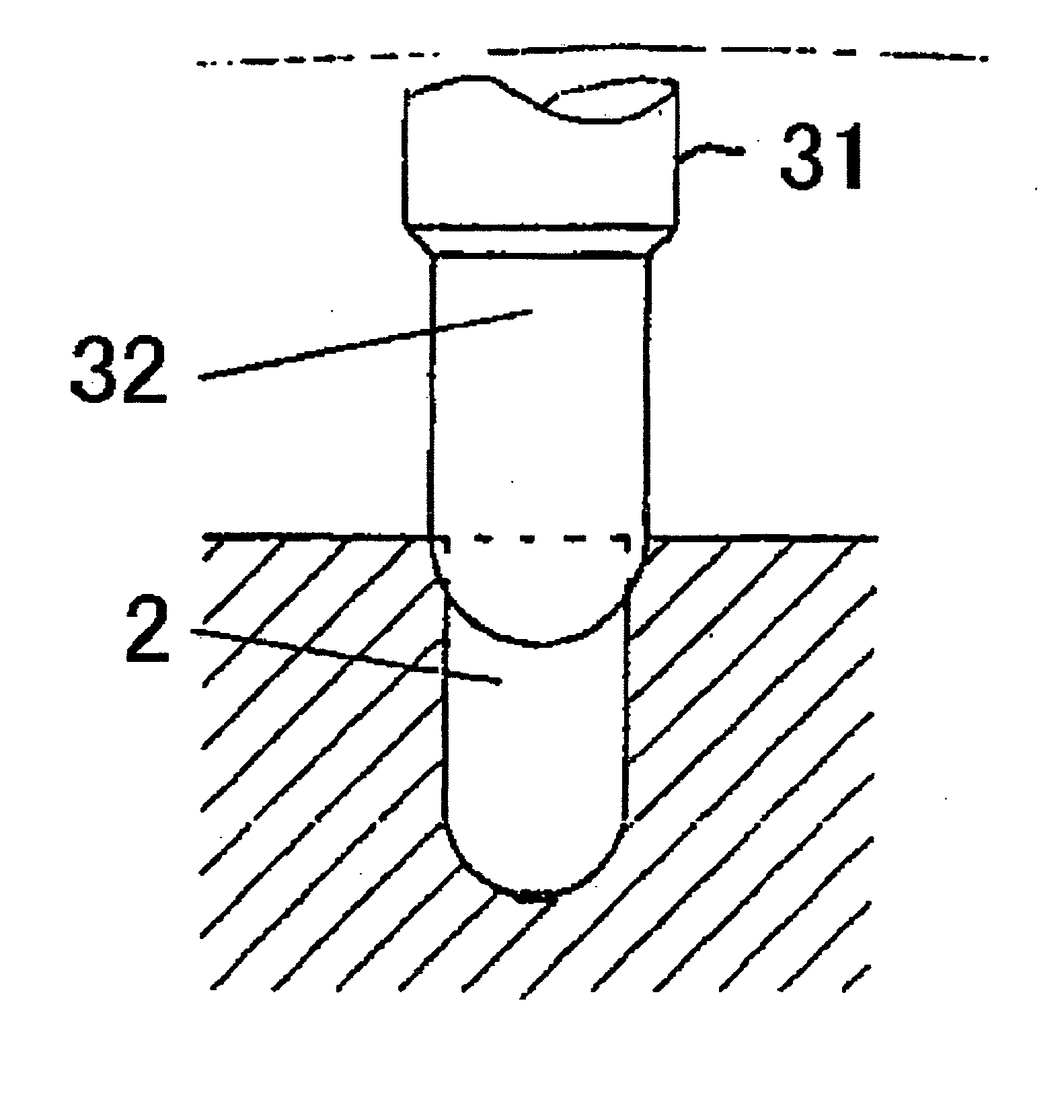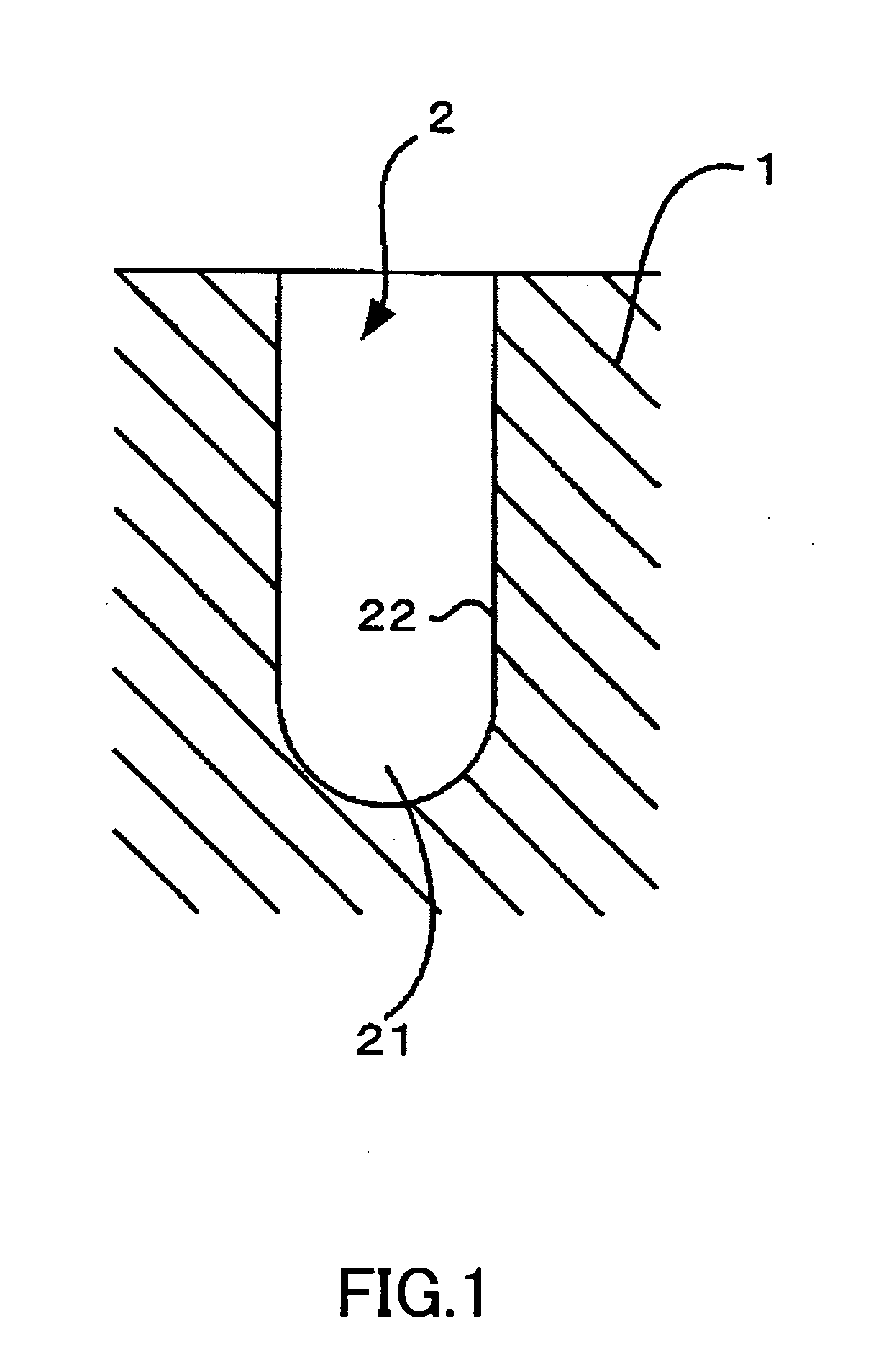Internal surface treating method of hole before tapping on aluminumdiematerial, internal surface of hole processed casting structure, and industrial tool of internal surface improvement
a technology of aluminumdiematerial and processing structure, which is applied in the direction of metal rolling arrangement, metal working apparatus, manufacturing tools, etc., can solve the problems of oil leakage into the screw hole, oil flowing through the oil passage, and fluid leakage between the machined holes formed in the casting in some cases, so as to improve the internal surface, prevent pressure leakage, and soften the raw material
- Summary
- Abstract
- Description
- Claims
- Application Information
AI Technical Summary
Benefits of technology
Problems solved by technology
Method used
Image
Examples
Embodiment Construction
[0027] According to the present invention, a tool having a screw preparatory hole diameter is inserted into a molded and worked hole such as a die-cast casting member, a sand casting member, a mold casting member and a low pressure casting member at high speed rotation and feeding, thereby softening the raw material by friction heat generated at that time to generate plastic flow, metal is charged into casting nests, the casting nests are split and as a result, casting nest circuit which is a cause of pressure leakage is split and the pressure leakage is prevented. If the temperature of the friction heat becomes 350° C. or higher, the possibility that the raw material is deformed and blister is generated is increased and thus, the temperature of the friction heat is set in a range of 230 to 320° C.
[0028] The best mode for carrying out the present invention will be explained in detail with reference to the drawings.
[0029]FIG. 1 shows a hole (molded hole) 2 formed in an aluminum die...
PUM
| Property | Measurement | Unit |
|---|---|---|
| feeding speed | aaaaa | aaaaa |
| speed | aaaaa | aaaaa |
| temperature | aaaaa | aaaaa |
Abstract
Description
Claims
Application Information
 Login to View More
Login to View More - R&D
- Intellectual Property
- Life Sciences
- Materials
- Tech Scout
- Unparalleled Data Quality
- Higher Quality Content
- 60% Fewer Hallucinations
Browse by: Latest US Patents, China's latest patents, Technical Efficacy Thesaurus, Application Domain, Technology Topic, Popular Technical Reports.
© 2025 PatSnap. All rights reserved.Legal|Privacy policy|Modern Slavery Act Transparency Statement|Sitemap|About US| Contact US: help@patsnap.com



